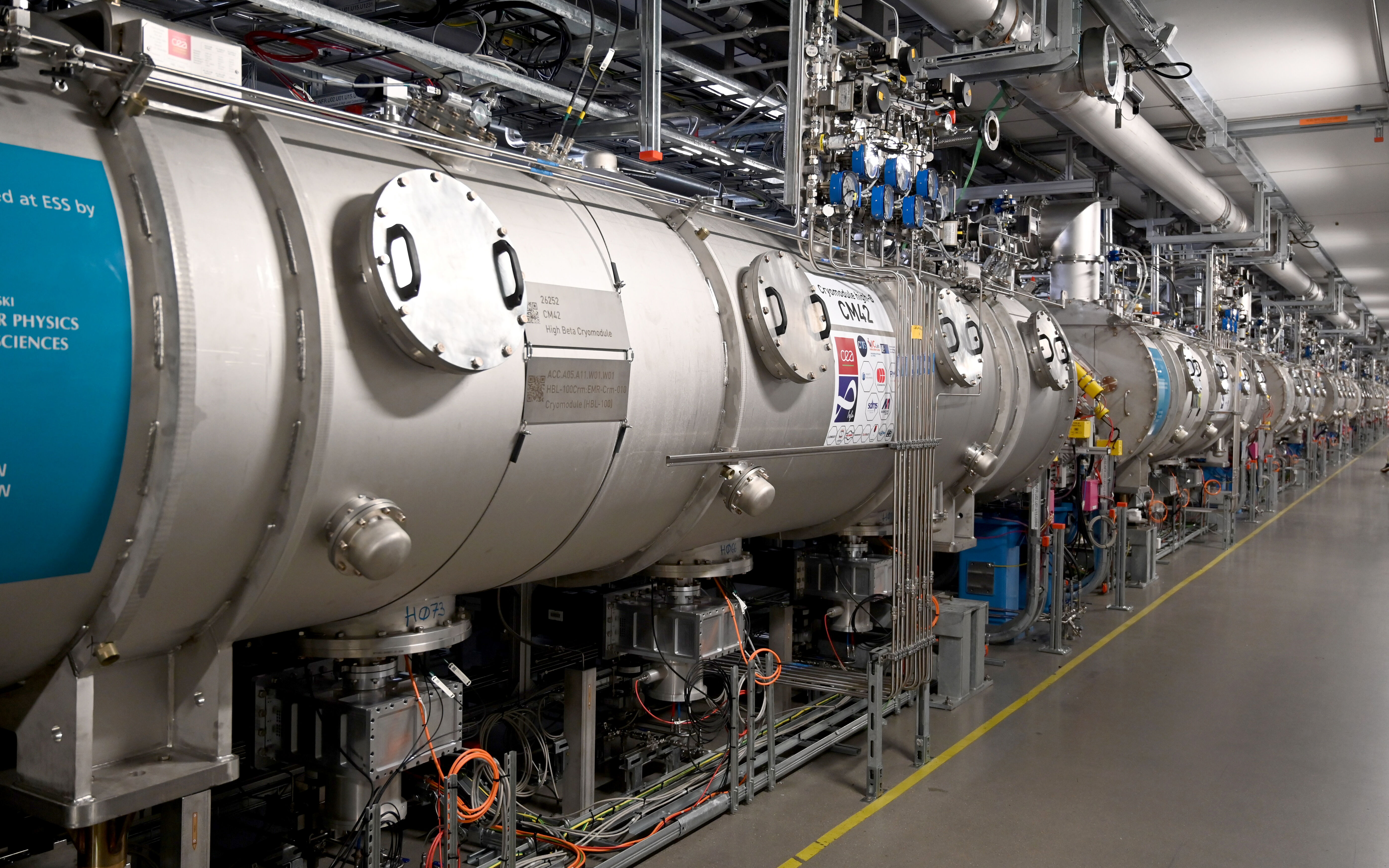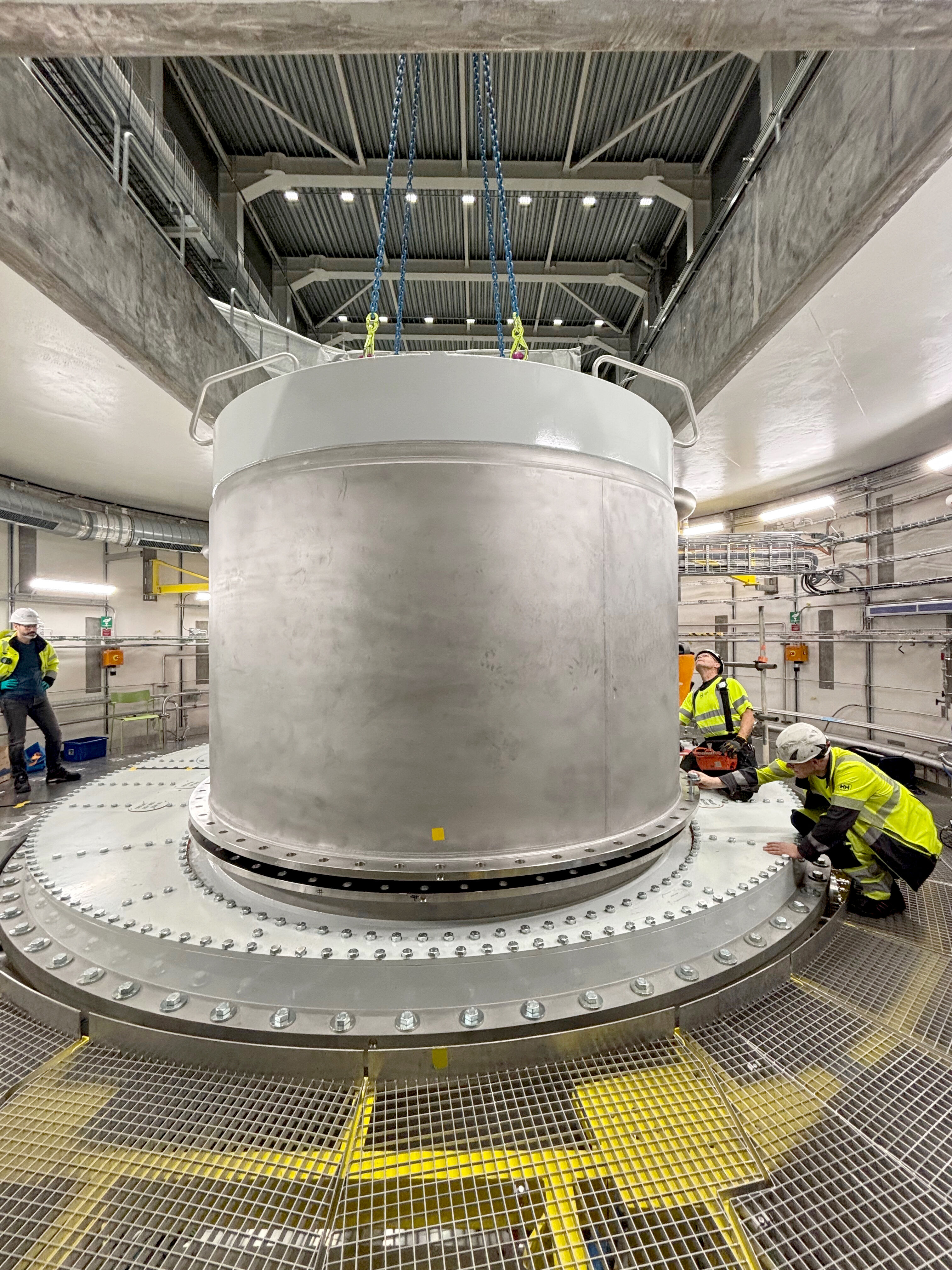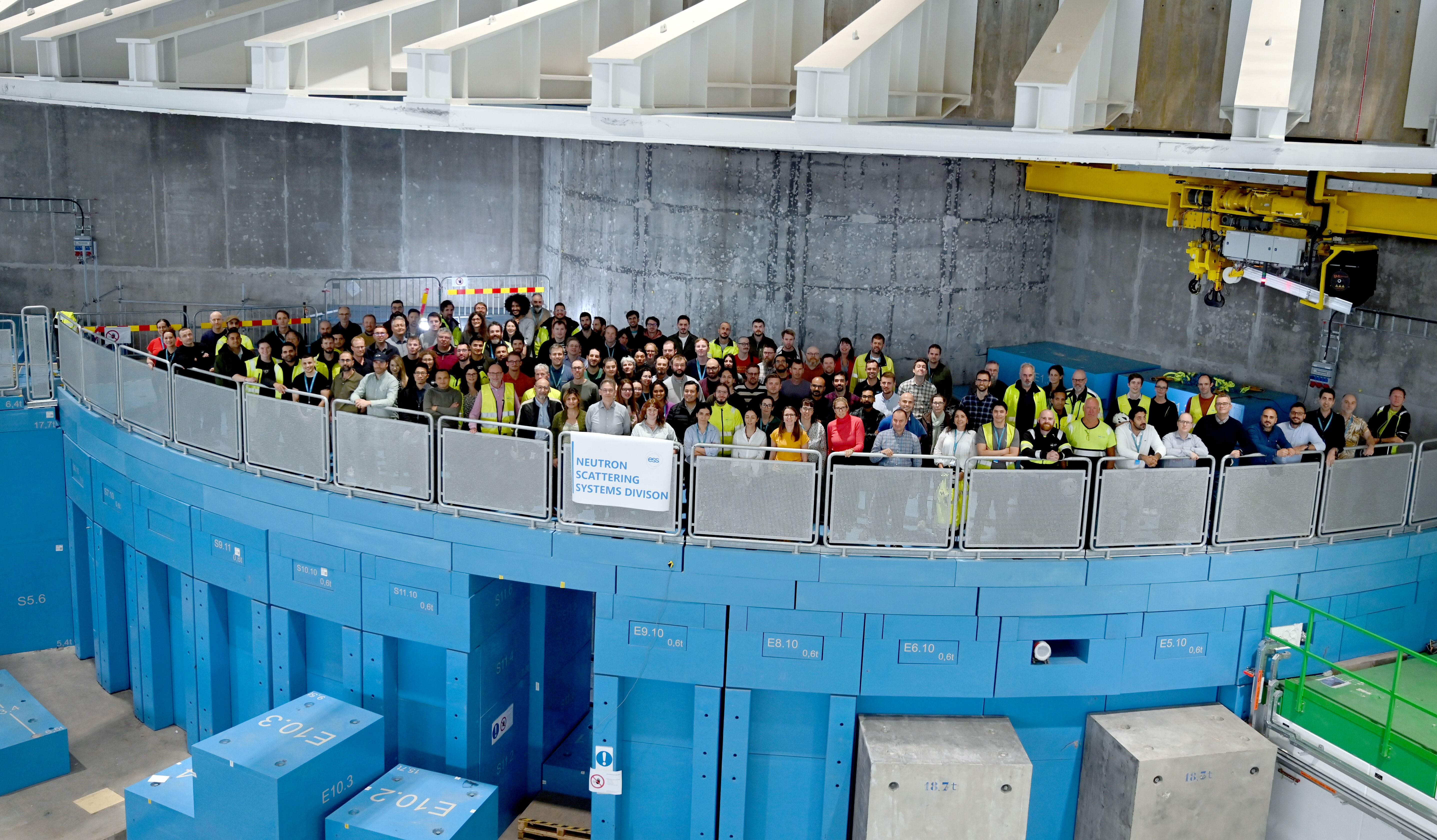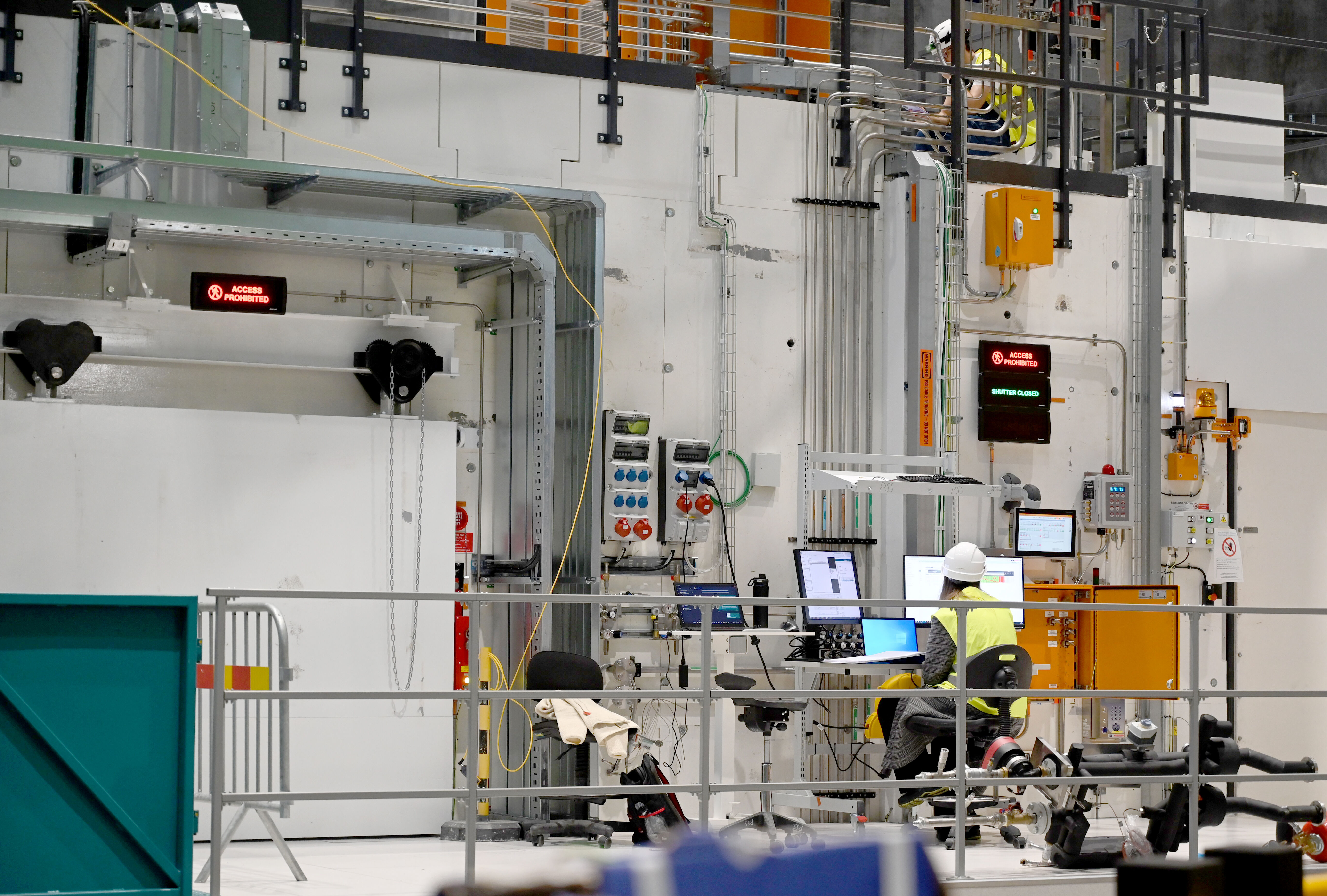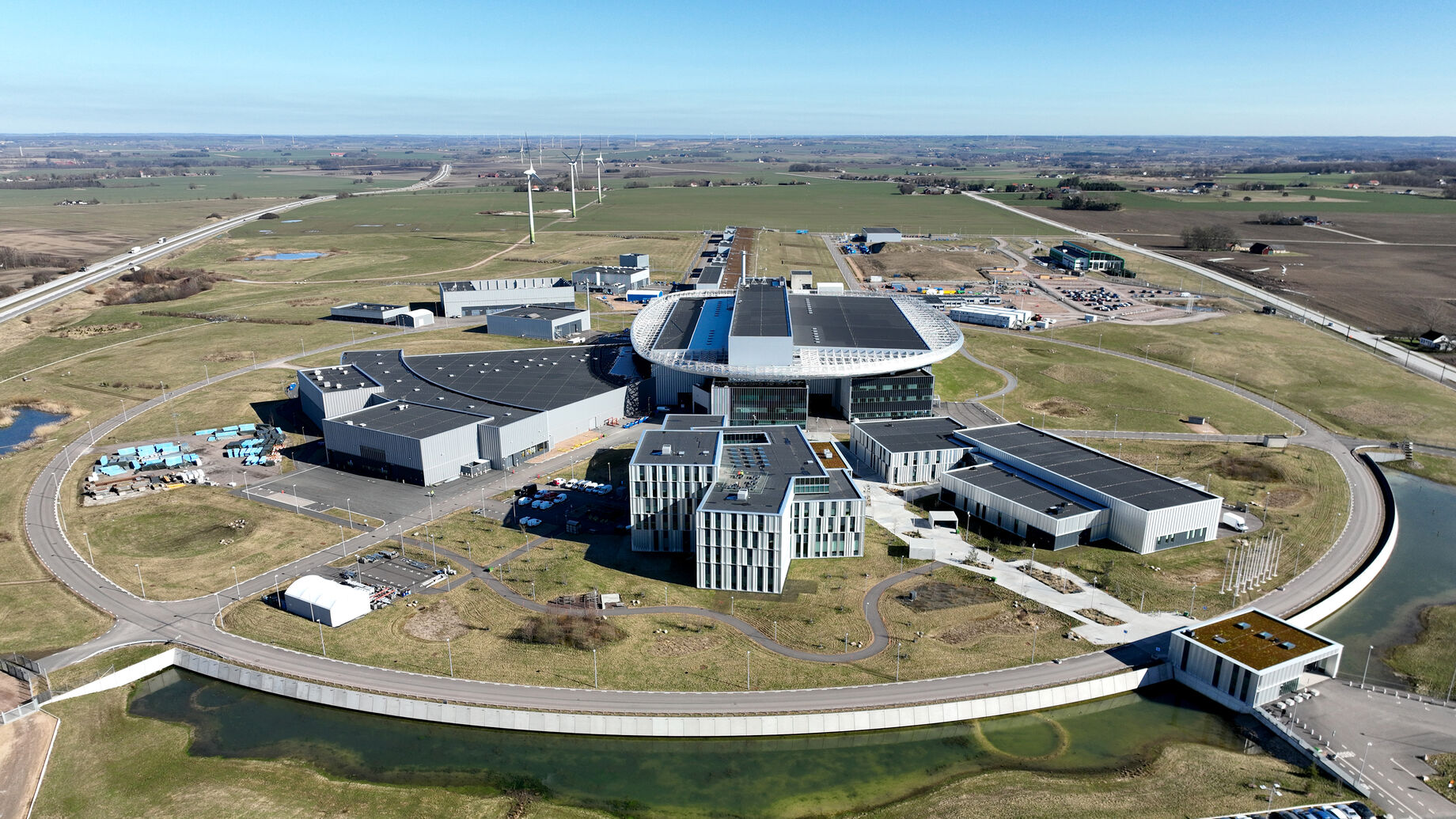
Each closure brings ESS a step closer to our goal of producing neutrons for science. Systems across the four technical pillars – accelerator, target, integrated controls and neutron scattering instruments – are being sealed, connected, and prepared for their final stages of integrated testing. It’s a coordinated effort by teams across the organisation to ready the entire ESS machine for operations. The goal is clear: Beam on Target and First Neutrons in 2026.
Accelerator: tunnel closed for radiofrequency (RF) conditioning
The Accelerator Division has now closed the 600-metre-long tunnel for RF conditioning, a process where radio-frequency power is gradually increased to test and tune the normal conducting cavities that accelerate the proton beam and the radio-frequency couplers for the superconducting cavities. Cold conditioning, which involves cooling the superconducting cavities with liquid helium, will follow.
These activities are part of the preparations for Beam on Dump 2, continuing last spring’s successful Beam on Dump campaign with extended scope, before sending the proton beam all the way to the target.
Target: Sealing the heart of the spallation source
The GRID – a precision diagnostic device that measures key properties of the high-energy proton beam before it strikes the target to ensure safe and stable operation – was the final piece of hardware for the ESS target systems to be put in place.
This installation enabled another major closure: the moderator cap was installed over the pit that houses the cryogenic piping and proton beam instrumentation for target operations. This enables full testing of the Cryogenic Moderator System (CMS) where liquid hydrogen circulates through the moderator to slow down the neutrons produced by spallation to energies that are useful for science.
Integrated tests of the target wheel helium cooling system will verify that the full loop – from circulator to wheel and back – performs as designed. This is an essential step before the system is declared ready for neutron factory tests and, ultimately, Beam on Target.
Instruments: Bunker shielding in place
In the experimental halls, the installation of shielding blocks that form the neutron bunker is nearing completion. The blue blocks of the bunker in Experimental Hall 2 are now being stacked, with Hall 1 already completed and undergoing operational tests.
This closure ensures a safe environment outside the bunker areas, which contain the first metres of each instrument beamline. Neutrons will stream from the target to the test beamline and first instruments in 2026.
At the same time, several of the scientific instruments (LOKI, ESTIA, NMX and more) are finalising installations, entering the cold commissioning phase and thereby getting ready for hot commissioning with neutrons.
Controls: Reviewing, testing, verifying
As physical systems close, focus shifts to verifying and testing the intricate network of systems that monitor and control the neutron production process. An intricate web of millions of control points including the Personnel Safety Systems (PSS) and Machine Protection System (MPS) makes the ESS machine tick. All are integrated through the overarching EPICS integrated control system.
Closing in on Beam on Target and First Neutrons
These closures – of tunnels, systems, and shielding – symbolise more than technical progress. They reflect the united effort of hundreds of people across ESS teams, disciplines, and partner institutions, all moving in synchronisation towards a single goal: to generate neutrons for science.
In parallel, an ongoing series of System Acceptance Reviews (SARs) followed by the global Safety Readiness Review (SRR5) will support the final management decision to grant authorisation for beam on target and first neutrons.
An intense period of integrated testing and reviews lies ahead as ESS enters the final stretch on its Road to Science.

























